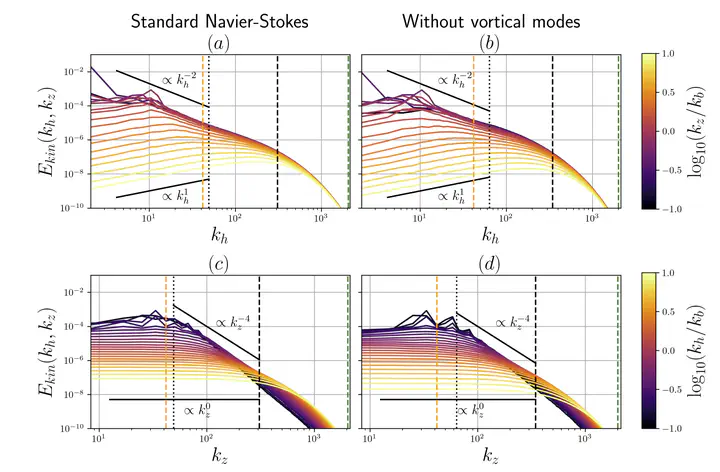
Abstract
The comprehension of stratified flows is important for geophysical and astrophysical applications. The Weak Wave Turbulence theory aims to provide a statistical description of internal gravity waves propagating in the bulk of such flows. Yet, internal gravity waves are usually perturbed by other structures present in stratified flow, namely the shear modes and the vortical modes. In order to check whether a weak internal gravity wave turbulence regime can occur, we perform direct numerical simulations of stratified turbulence without shear modes, and with or without vortical modes at various Froude and buoyancy Reynolds numbers. We observe that removing vortical modes naturally helps to have a better overall balance between poloidal kinetic energy, involved in internal gravity waves, and potential energy. However, conversion between kinetic energy and potential energy do not necessarily show fluctuations around zero in our simulations, as we would expect for a system of statistically stationary waves. A spatiotemporal analysis reveals that removing vortical modes helps to concentrate the energy around the wave frequency, but it is not enough to observe a wave turbulence regime. Yet, we observe that internal gravity waves whose frequency are large compared to the eddy turnover time are present, and we also find evidences for slow internal gravity waves interacting by Triadic Resonance Instabilities in our strongly stratified flows simulations.